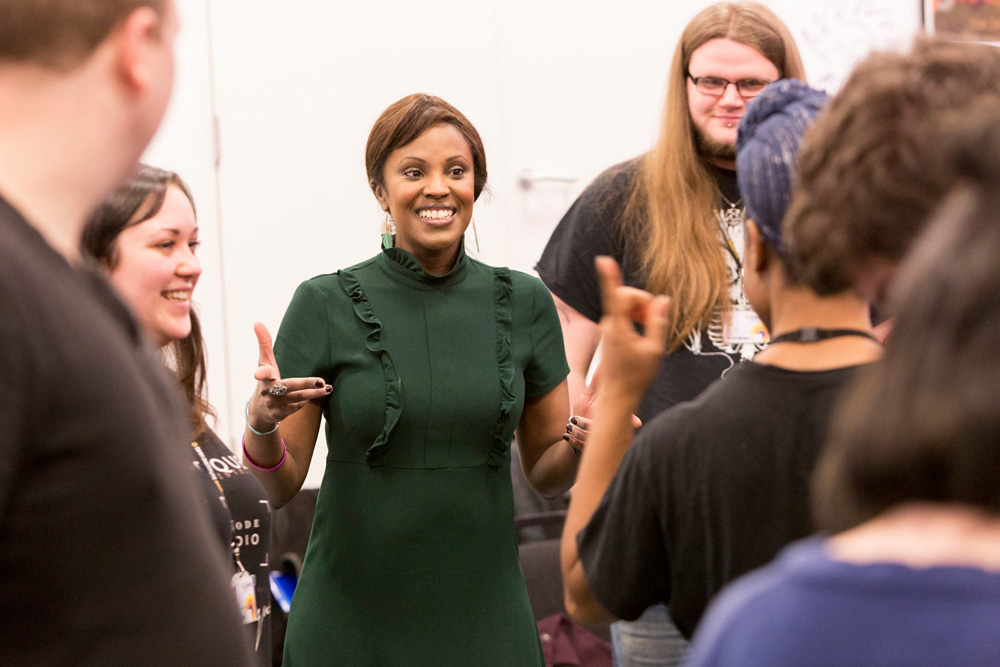BIMM Berlin friend and Masterclass host, Stephanie von Beauvais, has been producing and directing movies and commercials for over 20 years, and has gained an esteemed reputation as a creative and professional maker of music videos. Over the years, she’s worked on music videos for Beatsteaks, Tocotronic, Laing, 2raumwohnung, Kreator, Turbostaat, Egoexpress and many others, and here she shares her five top tips on how to create your own.
Shooting a music video is like making a dress: you can ask a top fashion designer to create one especially for you at great expense… but you might feel totally wrong in it. Or you can do it yourself, knowing it will be exactly right for you.
First communicate, then do.
Before you even start brainstorming ideas, you should first discuss what kind of moving image you need at this point in your band’s musical career. Do you need a lyric video or an official music video? If it’s a lyric video, then show the song words in a surprising and creative manner, such written on moving objects which relate to the song’s themes. If you’re making an official music video, it needs to show who you are, what you stand for and what you’re doing in the first five seconds of the clip. A music video approach can be narrative (a story), performative (showing the band perform) or associative (exploring the themes of the song). If you want your music video to get noticed on the internet, you have to produce good content – otherwise it just won’t be shared. So choose how you’re going to do it and make sure everyone involved is fine with the decision before you progress to the next step.
Keep it simple.
You need to come up with a clear idea that fits with your song and your band. Get to the bottom of your idea and explore it as far as you can take it… but remember, music videos are only about three to four minutes long and don’t have any dialogue.
When it comes to your idea, there should be one special, unique element which will be the thing people remember about your video. It might be the location, your cast, some special equipment or something else… but just concentrate on one thing, and get it right.
Use your imagination to edit the video in your head before you film it, and only shoot with equipment you can operate. If it gets too complicated, try to find an easier solution or ask somebody to help you with it.
If you don’t have money, then you’ll need time.
As the old saying goes ‘time is money’. If you don’t have much experience, you’ll have to learn on the job, which most likely means learning from your mistakes. And if you don’t have any money to fix those mistakes, then you’ll need plenty of time to try them again. You’re also more likely to get people to help you for free if you’re flexible with your timings on things like cast members, props, equipment, etc. You’ll also need time to prepare – on the big day you can only pull it all together if you’re well prepared. Rehearse everything in advance and know how it’s going to work before you start filming. One great tip is if you have no money but don’t want your video clip to look low budget, use slow motion and include as many reflecting or shining objects as possible – this will make it look much more expensive than it is.
Musicians are not actors.
Consider giving any acting in your music video to an actor or acting student, or someone you know who’s good in front of the camera, rather than the band. As there’s no dialogue in video clips, you can only rely on gestures and facial expressions to get your point across, and musicians often feel uncomfortable when being filmed – particularly if they don’t have their instruments or a microphone in their hands as a security blanket. The band can then perform or have a cameo appearance without having the pressure of being the main characters.
A music video without an ending won’t work.
At the start of your video you need a strong visual intro which makes the viewers curious to see more. Then let your idea unroll and take your viewers on a journey. Remember that the structure of your song should always lead the vision, not the plot idea you’ve come up with. Don’t give everything away at the beginning of your song – widen your story and bring in a new element during the middle eighth (or bridge). Then the song returns to its original pattern, but you should widen the storyline here and take it further, so your audience stays intrigued. Then there’s the ending – it doesn’t have to be a big one, but just something that visually implies wrapping it up… it might simply be your protagonist walking away from the camera, or even looking directly at it for the first time. Whatever it is, bring it home!
To find out more about studying with us order a prospectus.
Author: Stephanie von Beauvais



